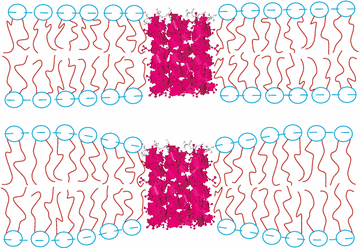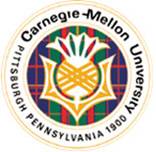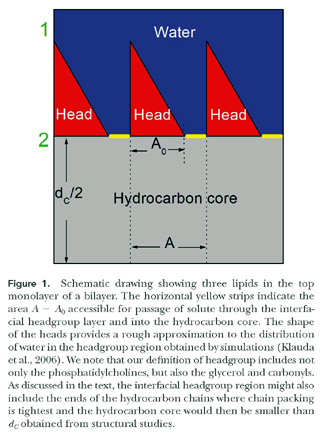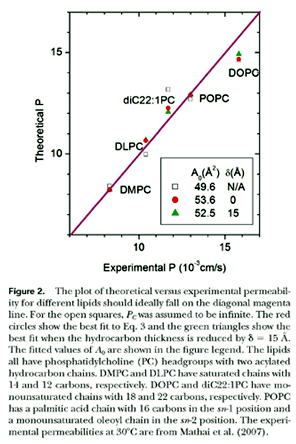| |
Research Highlights:
Precise Structures
HIV-1
Cholesterol
Peptides in Membranes
Rafts
Water Permeability Through Membranes
|
|
Questions: What structural and/or elastic properties of lipids correlate with water flow through membranes? Is membrane thickness the primary determinant of permeability? Can the solubility-diffusion model account for different water permeabilities through different lipid membranes? Can a better theory be found?
 Structural Determinants of Water Permeability through the Lipid Structural Determinants of Water Permeability through the Lipid
Membrane
J. Gen. Physiol., Volume 131, Number 1 January 2008, 69–76
John C. Mathai1, Stephanie Tristram-Nagle2, John F. Nagle2,3, and Mark L. Zeidel1
1Department of Medicine, Beth Israel Deaconess Medical Center and Harvard Medical School, Boston, MA 02215 2Biological Physics Group, Department of Physics, and 3Department of Biological Sciences, Carnegie Mellon University, Pittsburgh, PA 15213 |
| a b s t r a c t Despite intense study over many years, the mechanisms by which water and small nonelectrolytes cross lipid bilayers remain unclear. While prior studies of permeability through membranes have focused on solute characteristics, such as size, polarity, and partition coefficient in hydrophobic solvent, we focus here on water permeability in seven single component bilayers composed of different lipids, five with phosphatidylcholine headgroups and different chain lengths and unsaturation, one with a phosphatidylserine headgroup, and one with a phosphatidylethanolamine headgroup. We find that water permeability correlates most strongly with the area/lipid and is poorly correlated with bilayer thickness and other previously determined structural and mechanical properties of these single component bilayers. These results suggest a new model for permeability that is developed in the accompanying theoretical paper in which the area occupied by the lipid is the major determinant and the hydrocarbon thickness is a secondary determinant. Cholesterol was also incorporated into DOPC bilayers and X-ray diffuse scattering was used to determine quantitative structure with the result that the area occupied by DOPC in the membrane decreases while bilayer thickness increases in a correlated way because lipid volume does not change. The water permeability decreases with added cholesterol and it correlates in a different way from pure lipids with area per lipid, bilayer thickness, and also with area compressibility. |
.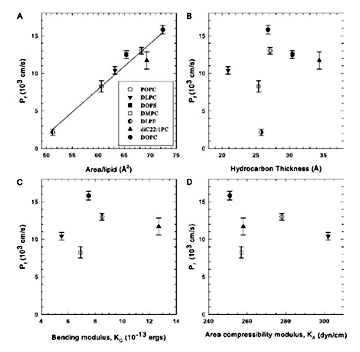 |
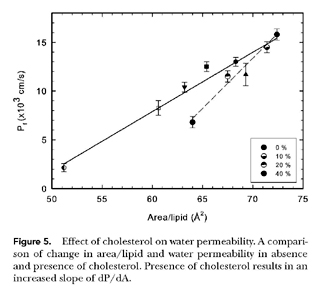 |
We welcome you to read the article - click here.
|
 Theory of Passive Permeability through Lipid Bilayers Theory of Passive Permeability through Lipid Bilayers
J. Gen. Physiol., Volume 131, Number 1 January 2008, 77-85
John F. Nagle1,3, John C. Mathai2, Mark L. Zeidel2, and Stephanie Tristram-Nagle1
1Biological Physics Group, Department of Physics, and 3Department of Biological Sciences, Carnegie Mellon University, Pittsburgh, PA 15213,
2Department of Medicine, Beth Israel Deaconess Medical Center and Harvard Medical School, Cambridge, MA 15213
|
a b s t r a c t Recently measured water permeability through bilayers of different lipids is most strongly correlated with the area per lipid A rather than with other structural quantities such as the thickness. This paper presents a simple three-layer theory that incorporates the area dependence in a physically realistic way and also includes the thickness as a secondary modulating parameter. The theory also includes the well-known strong correlation of permeability upon the partition coefficients of general solutes in hydrocarbon environments (Overton’s rule). Two mathematical treatments of the theory are given; one model uses discrete chemical kinetics and one model uses the Nernst-Planck continuum equation. The theory is fit to the recent experiments on water permeability in the accompanying paper.
We welcome you to read the article - click here. |
|
|
|
